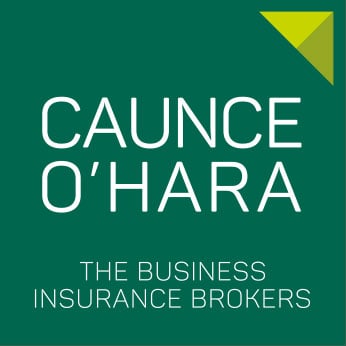Who is responsible for completing a fire risk assessment?
Posted on 22nd July 2022 by Phil Ainley
![]()
Carrying out fire risk assessments is an important part of running a business, whether you work alone or have lots of employees. Fire risk assessments help keep you and your employees and customers safe, and also protect your stock, equipment and premises from fire damage. Regardless of whether you’re a business owner or a landlord, it is your duty to try to keep anyone using your premises safe.
Keep reading to learn more about fire risk assessments and what you must do to fulfil your responsibilities.
Who is responsible for a fire risk assessment?
If you rent your premises from a landlord, or if you rent out your premises to a business owner, you might not be certain who is actually responsible for completing a fire risk assessment. Here’s a list of people who are responsible for fire safety in the workplace:
- The employer – the director or manager of the business as a whole.
- The owner of the premises – this could refer to either the employer or a landlord.
- Anyone with control of the premises – this could include building managers, facilities managers, external risk assessors or managing agents.
This means that both the landlord and the business tenant are responsible for fire risk assessments. Business premises that are shared may have multiple people who are responsible for fire safety from different companies. If this applies to your premises, you must work together with any other responsible person to ensure that your premises are safe.
It’s also worth knowing that you’ll still need to carry out a fire risk assessment for properties that are used primarily by paying guests rather than employees, such as self-catered accommodation or guest houses. This also applies to shared areas with multiple occupancies, e.g. corridors and stairwells in a block of flats. It does not apply to the flats themselves.
Here are all the types of premises that need to have fire risk assessments:
- All commercial premises and workplaces
- All premises with public access
- All common areas in multi-occupied residential buildings
Is a fire risk assessment a legal requirement?
Fire risk assessments are compulsory for all businesses – it’s vital to identify risks and take action to help prevent fires. You must also make sure a competent person carries out your fire risk assessment. If you are unsure about the process, you could hire an independent fire risk assessor for peace of mind.
If your business employs five or more people on the premises, or if you’re licensed to supply alcohol, you must keep a written record of your fire risk assessment findings and any improvement measures taken. Failure to carry out a fire risk assessment correctly could invalidate your business insurance, so it’s best to take the time to get it done properly.
What does a fire risk assessment involve?
A fire risk assessment comes in five steps:
- Identify any fire risks or hazards
- Identify who is at risk
- Manage risks: evaluate and take measures to reduce or eliminate them
- Create a written record of your findings, make an emergency plan and provide training where needed
- Review and update your fire risk assessment regularly.
For example, in an office setting, you might identify a faulty plug socket as a potential fire hazard. Your employees would be at risk, as would any customers or clients who might have cause to enter the office, and you should also consider the risk to any subcontractors you use, such as caterers, cleaners and construction workers.
Now that you’ve identified the hazard, it’s up to you to find a way to reduce or eliminate that risk. In this example, you could hire an electrician to repair the socket. Make a note of this in your written record. Then you should make sure you’ve got a suitable plan in place in the event of a fire, and that your employees have had the training they need to respond in an emergency.
Finally, you’ll need to repeat this process regularly to make sure any new hazards or risks don’t slip under the radar.
How often should fire risk assessments be reviewed?
Carrying out a fire risk assessment is vital, but it’s worth a lot more if you do it regularly and keep your records up to date. According to legislation, there is no specified timeframe for repeat assessments, which means you can’t be penalised for not completing your fire risk assessment on time. However, you should be able to demonstrate you carry out assessments on a regular basis.
Generally speaking, it is recommended that you complete a fire risk assessment at least once a year to make sure your workplace is safe. You might also wish to employ a professional fire risk assessor to do it every three or four years. Additionally, if there are any significant changes to the premises, such as renovations or extensions, you should complete another risk assessment as soon as possible.
For more guidance on fire safety and your legal requirements as a business owner, visit the Health and Safety Executive (HSE) website here.
Sources:
https://www.london-fire.gov.uk/safety/the-workplace/fire-risk-assessments-your-responsibilities/
https://www.gov.uk/workplace-fire-safety-your-responsibilities/fire-risk-assessments
https://www.uksafetymanagement.co.uk/services/fire-risk-assessments/
https://www.gov.uk/workplace-fire-safety-your-responsibilities
Useful Links
Professional Indemnity Insurance
Protects against claims of alleged negligence in your professional services, advice and designs.
Public Liability Insurance
Protects against claims of injury to third-parties or damage to a third-party's property.
Employers' Liability Insurance
A legal requirement for anyone employing staff. Protects your business in-case an employee is injured at work.
Directors and Officers Insurance
Protects your assets in the event of a claim. You may be held personally responsible for your business action and will have unlimited personal liability.
